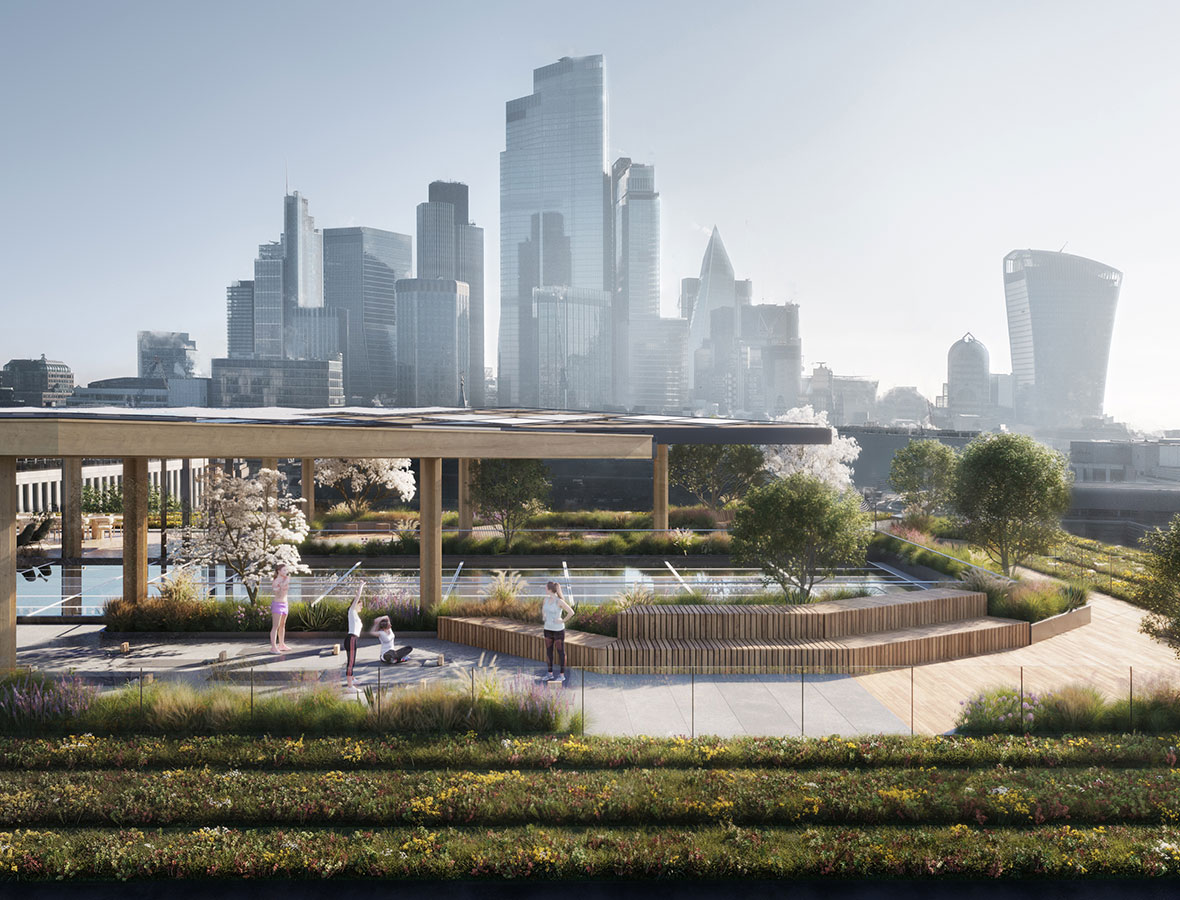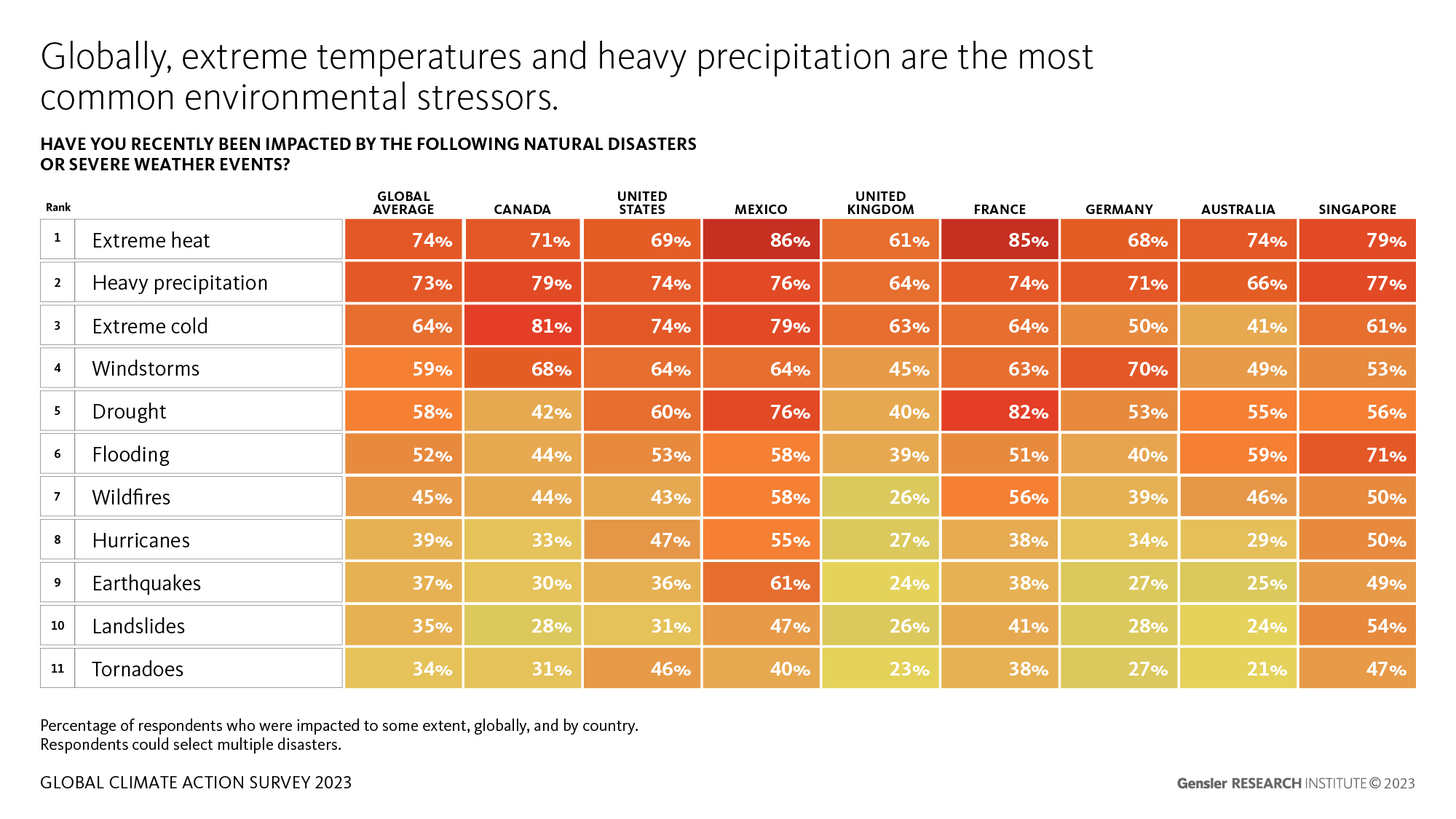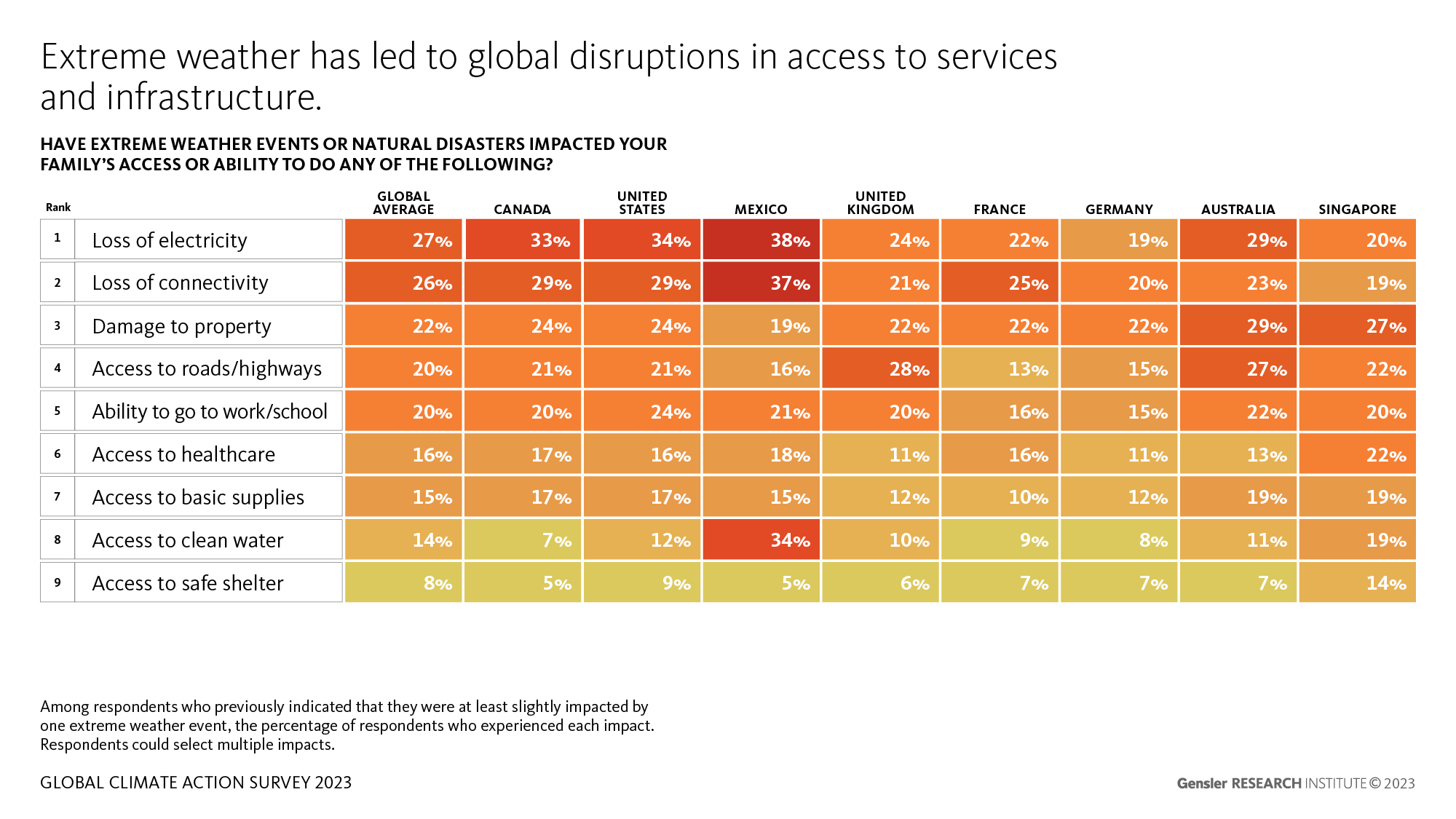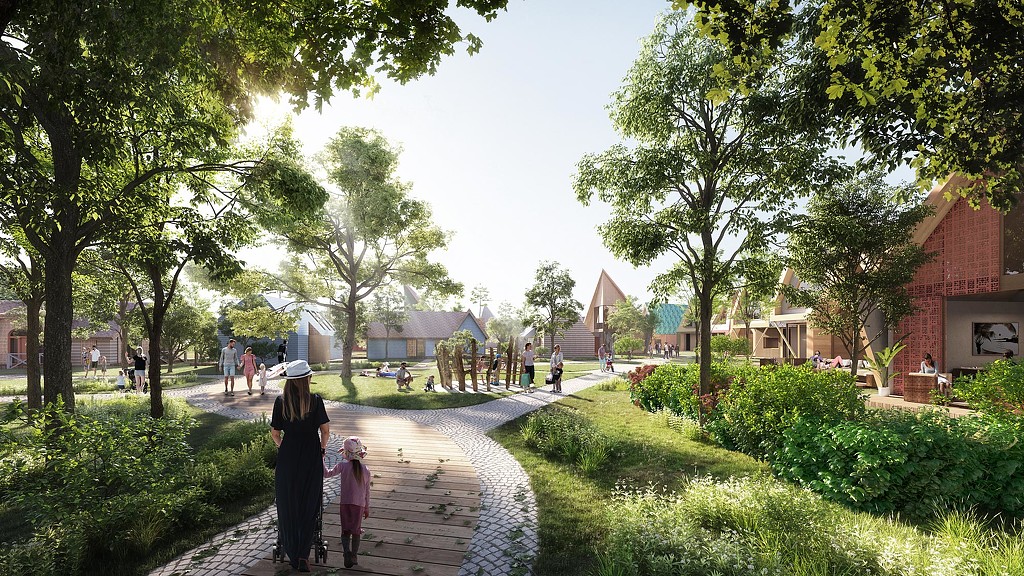Severe Weather: The New Design Imperative
January 25, 2024 | By Arlen Stawasz and Jacob Plotkin
Formerly unprecedented climate events have become our new reality. In 2023 alone, a series of dangerous weather events have disrupted lives, halted economies, and taken over the daily news cycle. July 2023 was the hottest month on record. August 2023 saw the highest-ever average sea surface temperature. The climate crisis is accelerating — the time has come for a concerted response in the form of directed climate action.
The Gensler Research Institute’s Global Climate Action Survey 2023 collected data on nearly 10,000 peoples’ experiences with severe weather across eight countries. We found that extreme weather is a global experience — 90% of respondents reported being recently impacted by at least one severe weather event. Worryingly, the average person was recently impacted by over five severe weather events.

It is undeniable that our buildings and urban infrastructure need to be prepared for the new norm of severe weather. Buildings must be designed to protect the health, safety, and welfare of the public; and our infrastructure must be weather proofed enough to withstand these extreme climatic events. This means moving beyond just keeping the elements out, and intentionally designing for extreme weather conditions.
The most common of all global environmental stressors are extreme heat and heavy precipitation; each experienced by nearly three quarters of survey respondents. However, there is considerable variation between countries and regions. Climate patterns differ significantly from North America to Europe to Asia to Oceania, driving variations in environmental stressors and requiring designers to adapt the mitigation strategies necessary to protect international communities.

Each country’s disaster profile informs the on-the-ground needs of today and tomorrow. When designing anywhere, a strong understanding of local environmental stressors is critical to developing healthy, resilient buildings and communities. This is where directed, intentional design can have a significant impact, helping us to better prepare for future climate shocks.
Environmental stressors are dangerous to human health and well-being. 77% of people impacted by severe weather reported negative impacts to their mental or physical health, with younger generations the most affected. Our survey also found that 83% of people are worried about the impacts of future environmental stressors on their physical health. Addressing climate’s impact on people’s sense of well-being is an ongoing critical need in the short and medium term.

Extreme weather is particularly worrying because of its potential to disrupt critical physical and social infrastructure. 75% of those recently impacted by severe weather lost some or all access to at least one key service or infrastructure. Disruptions to infrastructure were found in every country we surveyed. Loss of electricity and loss of phone or internet connectivity were the most common global disruptions, but there is considerable variation between nations. Outliers such as access to clean water in Mexico and damage to property in Australia and Singapore help us to better understand the most critical needs of each country.
Our survey also found differences in the magnitude of disruptions between countries. This is due both to the different types of disasters in each country, as well as the preparedness of infrastructure and communities to stand resilient in the face of climate shocks. Judging by the percentage of people who lost access to services or infrastructure, we found Germany’s infrastructure to be the most resilient among our eight survey countries.
Here, design plays a critical role. As architects, we can help the public realize the opportunity to make infrastructure changes that can lessen or avoid serious risks. It is all about building a collective consciousness around these issues, and with legislative support, the world will be able to move at a rapid pace to promote resilient design and infrastructure solutions.
Across architecture, interiors, and urban design of cities, all scales benefit from integrated resilient design. Buildings must be designed to resist environmental stressors, and ideally act as a place of refuge, when an extreme storm or heat event occurs. If whole buildings anticipate climate projections and are designed to withstand acute shocks, then economic risk is a limiting factor. Spaces can then be built for adaptability and flexibility. By designing to meet the risks of the future, we can mitigate financial loss and protect critical assets.
Our community infrastructure is the most important — if the paths of travel to and from our project sites are damaged, then the buildings become inaccessible islands. Innovative resilient infrastructure works by factoring in climate risks to protect the access to as well as the buildings and interior spaces. Investing in resilient design has considerable social, economic, and environmental benefits. In a time of increasingly common and intense severe weather events, these investments are a global imperative to keep our communities safe, healthy, and thriving.
For media inquiries, email .


